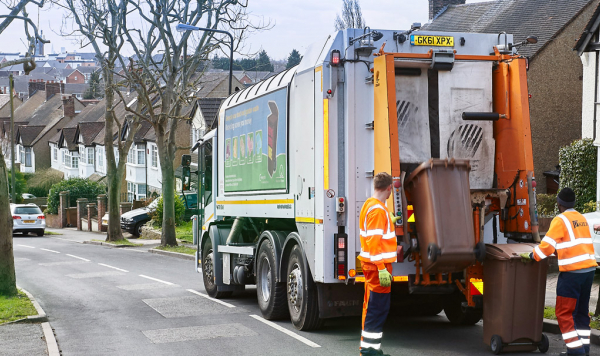Request
hi, my name is [REDACTED] and i am a fourth year student from the [REDACTED], currently working on my final year dissertation on waste management in the uk. to complete my dissertation, i would need some information waste management in london. information needed on: 1. total mass of household waste collected in 2017, 2018, 2019, 2020 and 2021 2. total mass of each component of household waste collected in 2017, 2018, 2019, 2020 and 2021 - paper and card - metals - plastic - glass 3. total mass of household waste going to landfill in 2017, 2018, 2019, 2020 and 2021 4. the mass of each component of household waste going to landfill in 2017, 2018, 2019, 2020 and 2021 - paper and card - metals - plastic - glass 5. total mass of household waste recycled in 2017, 2018, 2019, 2020 and 2021 6. the mass of each component of household waste recycled in 2017, 2018, 2019, 2020 and 2021 - paper and card - metals - plastic - glass 7. total miles travelled by trucks used for household waste collection in 2017, 2018, 2019, 2020 and 2021 8. total mass of household waste incinerated in 2017, 2018, 2019, 2020 and 2021 9. the mass of each component of household waste incinerated in 2017, 2018, 2019, 2020 and 2021 - paper and card - metals - plastic - glass 10. the total energy generated from household waste incineration process in 2017, 2018, 2019, 2020 and 2021
Response
Apologies for the delay in coming back to you.
The attached spreadsheet contains information from DEFRA about the waste collected (see Table 1) and managed (see Table 2) by local authorities from the period 2014-15 to the period 2020-21. You can filter the tables to show only data from NLWA or individual boroughs using the ‘Local Authority’ column in Table 1 and the ‘Authority’ column in Table 2.
The table below presents the seasonal and average waste composition results for the whole NLWA area. Upper and lower confidence limits are included for the average waste composition result.
|
|
Season 1 |
Season 2 |
Average |
LCL |
UCL |
|
Paper |
12.9% |
13.9% |
13.4% |
12.2% |
14.6% |
|
Card |
6.2% |
6.9% |
6.6% |
5.9% |
7.2% |
|
Dense plastic |
7.5% |
8.5% |
8.0% |
7.2% |
8.8% |
|
Plastic film |
7.6% |
7.9% |
7.8% |
7.4% |
8.2% |
|
Textiles |
5.9% |
3.7% |
4.8% |
4.2% |
5.4% |
|
Glass |
3.5% |
5.2% |
4.4% |
3.9% |
4.8% |
|
Miscellaneous combustibles |
8.2% |
7.9% |
8.1% |
7.3% |
8.9% |
|
Miscellaneous non-combustibles |
1.2% |
0.6% |
0.9% |
0.0% |
1.9% |
|
Ferrous metal |
2.7% |
2.0% |
2.3% |
1.9% |
2.8% |
|
Non-ferrous metal |
1.6% |
1.4% |
1.5% |
1.2% |
1.8% |
|
WEEE |
1.6% |
0.7% |
1.1% |
0.7% |
1.6% |
|
Hazardous |
0.3% |
0.6% |
0.5% |
0.3% |
0.6% |
|
Organic non-catering |
1.7% |
4.8% |
3.2% |
2.8% |
3.7% |
|
Organic catering |
36.1% |
31.4% |
33.8% |
30.1% |
37.4% |
|
Fines |
3.1% |
4.4% |
3.7% |
0.7% |
6.8% |
|
Total |
100.0% |
100.0% |
100.00% |
|
|
The next table shows the electricity that was exported to the Grid between 2017 and 2020. It does not include the parasitic demand of the energy from waste plant and infrastructure itself. We do not have a record of electricity generated prior to 2017.
|
2020 KWH |
2019 KWH |
2018 KWH |
2017 KWH |
|
|
TOTAL ELECTRICITY EXPORTED |
243,291,151.50 |
224,726,727.00 |
241,585,270.00 |
239,007,521.00 |
Waste collection is managed by the seven north London boroughs – Barnet, Camden, Enfield, Hackney, Haringey, Islington, and Waltham Forest. NLWA does not hold information on the miles travelled by their collection trucks, but the boroughs themselves may be able to assist.
If you have any queries about this request, please don’t hesitate to contact me.


